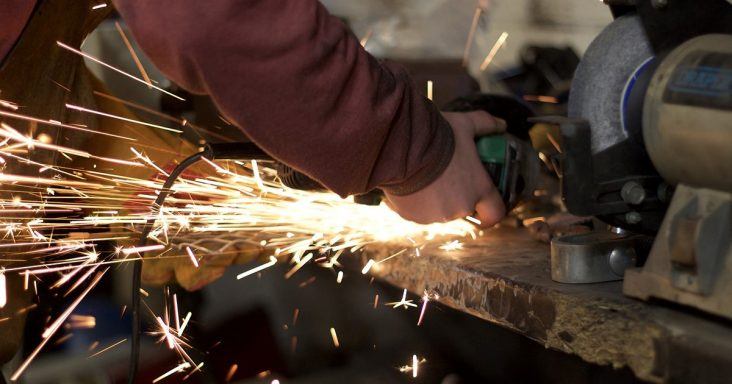Manufacturing sector grew at slower rate in December
by January 4, 2022 2:12 pm 544 views

Economic activity in the manufacturing sector rose in December but at a slower rate than in November, according to the Institute for Supply Management (ISM).
The ISM released Tuesday (Jan. 4) the December Manufacturing ISM Report On Business that shows the Purchasing Managers’ Index (PMI) declined by 2.4 percentage points to 58.7%. A PMI above 50% indicates the manufacturing economy is expanding.
According to the report, new orders, production and employment increased in December. Supplier deliveries slowed at a slower rate, and the backlog of orders rose. Raw material inventories increased, but customers’ inventories remain too low. Prices rose but at a slower rate. And imports and exports increased.
“The U.S. manufacturing sector remains in a demand-driven, supply chain-constrained environment, with indications of improvements in labor resources and supplier delivery performance,” said Timothy Fiore, chair of the ISM Manufacturing Business Survey Committee. “Shortages of critical lowest-tier materials, high commodity prices and difficulties in transporting products continue to plague reliable consumption. Coronavirus pandemic-related global issues – worker absenteeism, short-term shutdowns due to parts shortages, employee turnover and overseas supply chain problems – continue to impact manufacturing. However, panel sentiment remains strongly optimistic, with six positive growth comments for every cautious comment, down slightly from November. ISM’s Semiannual Economic Forecast, released in December, indicates a strong 2022 performance expectation in terms of revenue growth and profitability.”
The following six manufacturing industries reported moderate-to-strong growth in December: chemical products; fabricated metal products; computer and electronic products; food, beverage and tobacco products; transportation equipment; and petroleum and coal products.
 “Manufacturing performed well for the 19th straight month, with demand and consumption registering month-over-month growth,” Fiore said. “Meeting demand will remain a challenge, due to hiring difficulties and a clear cycle of labor turnover at all tiers. For the second month in a row, Business Survey Committee panelists’ comments suggest month-over-month improvement on hiring, offset by backfilling required to address employee turnover. Supplier delivery rate improvement was indicated by the supplier deliveries index softening in December. Transportation networks, a harbinger of future supply delivery performance, are still performing erratically; however, there are signs of improvement.”
“Manufacturing performed well for the 19th straight month, with demand and consumption registering month-over-month growth,” Fiore said. “Meeting demand will remain a challenge, due to hiring difficulties and a clear cycle of labor turnover at all tiers. For the second month in a row, Business Survey Committee panelists’ comments suggest month-over-month improvement on hiring, offset by backfilling required to address employee turnover. Supplier delivery rate improvement was indicated by the supplier deliveries index softening in December. Transportation networks, a harbinger of future supply delivery performance, are still performing erratically; however, there are signs of improvement.”
In the chemical products industry, a respondent said chemical supply chains are filling slowly. “Still not full, but (my) gut feeling says it’s getting easier to source chemical raw materials,” the respondent noted.
A respondent in the transportation equipment industry said demand is strong, and factories are producing as many vehicles as they have materials for. But production capacity is limited because of the global chip shortage.
In the food, beverage and tobacco products industry, a respondent said “labor is still tight, and turnover continues. Supply chain issues are still causing customer order cuts. Trucks are scarce, and the teams are burned out from working long hours and dealing with supply chain constraints daily.”
A respondent in the miscellaneous manufacturing industry said “supply chain interruptions have dramatically increased in the fourth quarter. Many of our suppliers are unable to deliver product until January or February 2022 or later.”
A respondent in the nonmetallic mineral products industry said “construction projects for 2022 and 2023 look very strong for us.”
In the fabricated metal products industry, a respondent said price increases are slowing, lead times are falling and inventories are growing. “I hope we have reached the top of the hill to start down a gentle slope that lets us get back to something that resembles normal,” the respondent added.
A respondent in the furniture and related products industry said business is good, and customer orders are strong. However, the respondent noted that labor, materials and transportation issues remain.
A respondent in the machinery industry said steel costs have fallen, but prices remain high. Supplier performance and on-time deliveries have improved, the respondent added.
